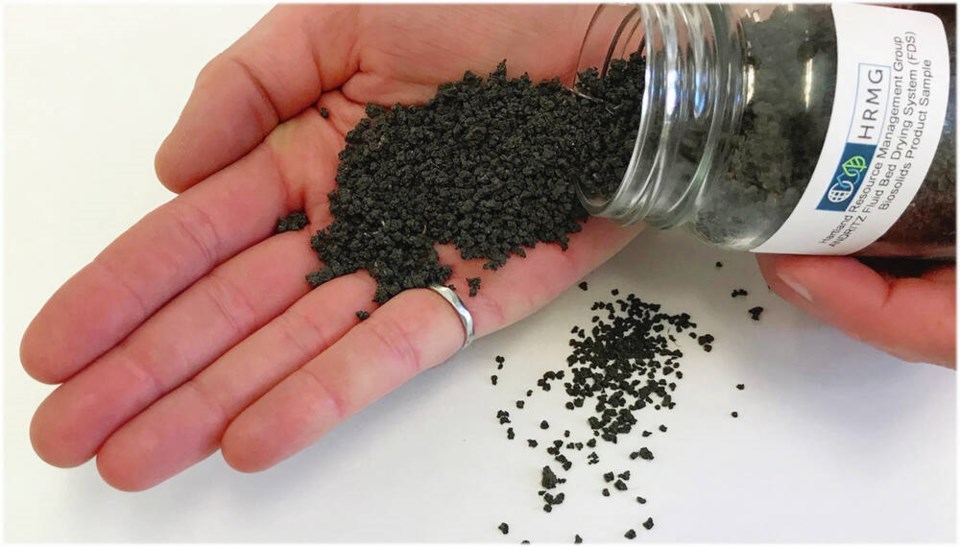The Capital Regional District is aiming to have a temporary demonstration plant established to show what can be done with the 3,000-plus tonnes of biosolids — the end product of sewage treatment — it produces every year.
The proposed plant would run for up to 15 months so data on its performance and cost could be collected and evaluated.
Right now, biosolids are being sent to the Hartland Landfill in Saanich as a stop-gap measure, but it’s “becoming more urgent” to find another place because space at the landfill is “being exhausted at a much higher rate than anticipated,” says a new report from senior environment staff.
The crumbly pellets aren’t even supposed to be going the landfill, since the province requires that they have some kind of beneficial use.
The CRD’s environmental services committee is set to meet Wednesday to talk about biosolids in the wake of a Nanaimo Regional District letter indicating it has reservations about a plan to send 300 tonnes annually to remediate an old quarry at Cassidy.
“We have difficulty in understanding the current approach of the CRD to prevent land application of biosolids within your region while shipping it to another region for the same use,” wrote Vanessa Craig, chair of the Nanaimo board.
While the Cassidy quarry proposal is meant to be an interim use, Craig notes that the timeline for addressing the issue is uncertain, and “operational difficulties may arise again in the future which suggests the need for a plan for an in-region use [of biosolids].”
In February, the CRD board amended its rules to allow biosolids to be applied to non-agricultural lands in the short-term within the capital region. That has not happened to date.
A long-term plan for the CRD’s biosolids is due to be delivered to the province in June of next year. CRD staff will be providing a report to the board next month on that work.
In the meantime, the CRD is still trying to find a place that will take its biosolids.
Its earlier plan was sending them to Richmond for use as fuel at LaFarge Canada Inc.’s cement manufacturing plant. But that plant shut down in July of last year and has not been able to complete maintenance and repairs needed to run again, the staff report said, which is why the CRD turned to the local landfill to take its biosolids.
The CRD published a request for expressions of interest for the biosolids beneficial-use demonstration plant on Monday. Submissions must be in by July 5.
It’s hoping to hear innovative ideas from companies and technology developers, or technology representatives with experience in biosolids.
The CRD is also hoping to see ways to combine the biosolids with another solid-waste stream for co-processing in the plant.
A request for proposals for a full-scale demonstration plant to run for 15 months will go out this year, with a contract to be awarded in the final quarter of this year. The plant would begin operations in the first quarter of 2026.
The CRD is looking for potential advanced thermal technologies to run its plant. (A thermal plant converts heat energy into electric power.)
A plant needs to be able to handle up to 10 dried tonnes of biosolids daily to create an end product or products with a beneficial use.
Greenhouse-gas emissions and carbon footprint will be part of the evaluation, along with its net energy balance and its capital and operating costs.
The CRD will be looking for environmental controls such as odour, surface water, noise and dust.
>>> To comment on this article, write a letter to the editor: [email protected]



